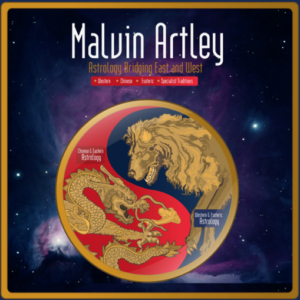
2014 in L'Alpe di Siusi, fresh from the US and Australia.
This site will be undergoing upgrades for the next months (from Sep 2021). Check back in from time to time!
If you would like a consultation, go to the 'Enquiries' button at right and fill out the form
To subscribe to the monthly newsletter, go to the 'Subscribe' button at right
I can be reached and read at the social media icons, top right
Comments to newsletters are temporarily closed. If you want to comment, contact me at admin@malvinartley.com or use the 'Enquiries' button, at right


The Emperor’s Stargate
Ming Shu: The Art and Practice of Chinese Astrology
New I Ching: Discover the Secrets of the Plum Blossom Oracle
Tibetan Astrology
Tibetan Astrology and Geomancy
Burmese Astrology: Burmese astrology is largely derived from Vedic astrology, using the same 12 signs of the Western zodiac, as well as the 27 nakshatras (lunar mansions) of Vedic astrology and the 8 weekday signs.
Be Brilliant Be You
Mongolian Astrology: Mongolian astrology closely follows the astrology of the old Imperial courts of China, with its very extensive catalogs of over 1,000 stars, the 28 lunar mansions and so forth. The main difference between Mongolian and Chinese astrology is the structure of their charts. Some Mongolian astrological charts do not resemble astrological charts at all.
Divine Knowledge: Buddhist Mathematics According to the Anonymous Manual of Mongolian Astrology and Divination
Japanese Astrology: Japanese astrology is essentially the Japanese adaptation of Chinese Four Pillars/BaZi astrology.
The Power Wish
Two other systems worth noting:
The Astrology of I Ching
The T’ai Hsuan Ching: The Hidden Classic
Related